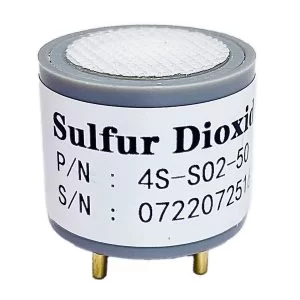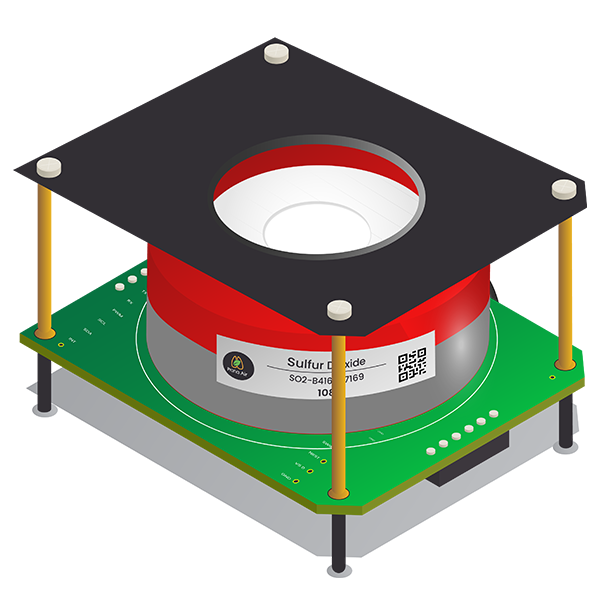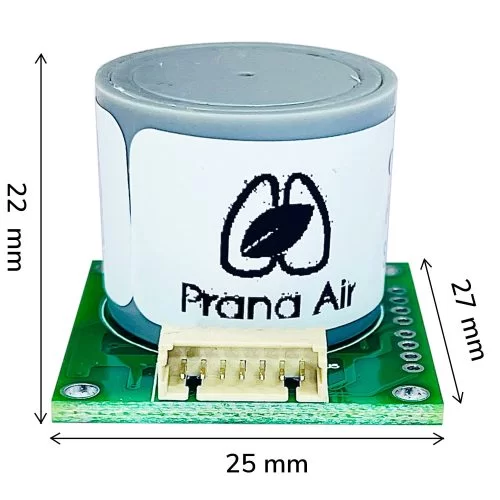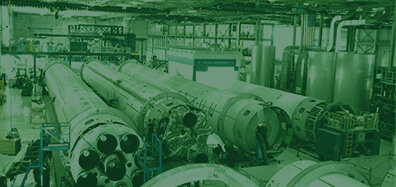SO2 Sensor 50 PPM Range
0.01 PPM Resolution

Prana Air SO2 sensor is made with precision and fineness for both industrial-grade and consumer-grade safety monitoring. The sensor is based on electrochemical technology for highly toxic SO2 gas. The sensor allows easy inclusion of all monitoring and regulatory solutions as it has ultra-thin packaging, and is compact and cost-effective. The sensors are robust, have higher operational life, and diversified applications for commercial, industrial, and residential grade instruments.

High-resolution sensors are available in PPB and PPM variants making them highly suitable for various applications for portable and fixed detecting instruments, Environmental Monitoring Systems (EMS), and networks.
– Fineness and precision
– Resolution: 1 PPB
– Dimension 20mm x 20mm
– Stable response
– Electrochemical technology-based
Sulfur Dioxide is a toxic gas having a burnt odor. The odor of sulfur dioxide is similar to that of nitric acid. The gas is acidic erosive and is capable to form dangerous compounds like sulfuric acid and sulfate pollutants by reacting with atmospheric compounds. The sources that release sulfur dioxide in nature are fossil fuel burning, power plants, metal extraction, volcanoes, industrial facilities, different vehicular emissions, refining and extraction of oil, and diesel engines. However, the push toward BSVI engines by Indian Government has made a significant impact.
![]()
The compact size of the sensor enables it to be installed into any kind of setting, big or small, allowing it to be versatile in handheld as well as stationary devices.
![]()
The SO2 sensor comes with a long life of almost 10 years. With this kind of longevity, there is no need to worry about calibration and breakdown.
![]()
Prana Air SO2sensor is not only precise but swift too with an average response time of 15 seconds.
![]()
With our sensors, there is no need to worry about energy consumption as not only they are accurate but energy saving too.
![]()
Sulfur Dioxide sensors are calibrated for every device before integration for providing accurate observation.
![]()
Our sensors are in sync with the guidelines set by the RoHS for the restriction of hazardous substances in electrical and electronic equipment.
Prana Air provides the best in class air quality monitoring solutions providing accurate observations. Our monitors use an electrochemical sensor for so2 monitoring which is the most sought after monitoring among different monitoring processes. Our SO2 sensor works on the principle of the electrochemical gas sensing technique. These sensors are amperometric fuel cells designed to quantify the concentration of a gaseous toxin.
The technique involves three components out of which two are electrodes (working and counter) and the other is an ion conductor. The ion conductor is the bridge for electrodes. When SO2 passes through the sensor a current is generated between the electrodes due to oxidation and reduction reaction. The current generated is directly proportional to the concentration of SO2 present.

Calibration of so2 sensor is comparing the standard measurement with your device’s measurement. To calibrate the sensor, 23 + 3oC temperature, 50 + 15% relative humidity, 0.9-1.1atm pressure and air velocity of 0.05m/s were used as standard environmental conditions. The accuracy and traceability of measurement are also determined by calibration. For calibration, the NIST standard of gas cylinder is used for reference.


| Parameter | Value |
|---|---|
| Measurement Range | 0 to 50 ppm |
| Resolution | 0.01 PPM |
| Repeatability | < +/- 3 % of reading |
| Response Time | < 15 seconds |
| Sensitivity @ 200 mV bias | 25 +/- 10 nA/ppm |
| Service Life | 2 years (-20℃~50℃ in air) |
| Operating Temperature Range | -20℃~50℃ |
| Operating Humidity Range – non-condensing | 15%RH – 90%RH (no condensation) |
| Operating Voltage | 3.7V~5.5V |
| Module size | length 27mm × width 25mm × height 22mm |

Air Quality Monitoring
Equipment

Industrial Safety
Equipment

Automobile & Locomotive
Equipment

Regulatory Instruments at Power Plants
& Oil Refineries

Vehicular Emission Detectors
& Controllers

Retrofitting Devices
For DG Sets
The factors such as water, salt contamination, operation at high temperature, and low humidity for a prolonged period can affect the performance of the sensor.
The sensor does not come with a digital board but if needed, an additional purchase of a digital board along with the microcontroller is recommended.
The standard environmental conditions for sensor calibration used are 23 + 3oC temperature, 50 + 15% relative humidity, 0.9-1.1atm pressure and air velocity of 0.05m/s. The alteration in environmental conditions may affect the sensitivity of sensor but is easily compensated.
Prana Air provides 6 months warranty on the sensor only on manufacturing defects.
Prana Air provides our own solution for the connectivity of the sensor through a USB microcontroller and digital board to UART Bridge.
According to NIOSH and OSHA, the personal exposure limit for SO2 is 2 ppm and 5 ppm respectively.

Contact us for more details about the Sulfur Dioxide SO2 sensor.
Drop a message